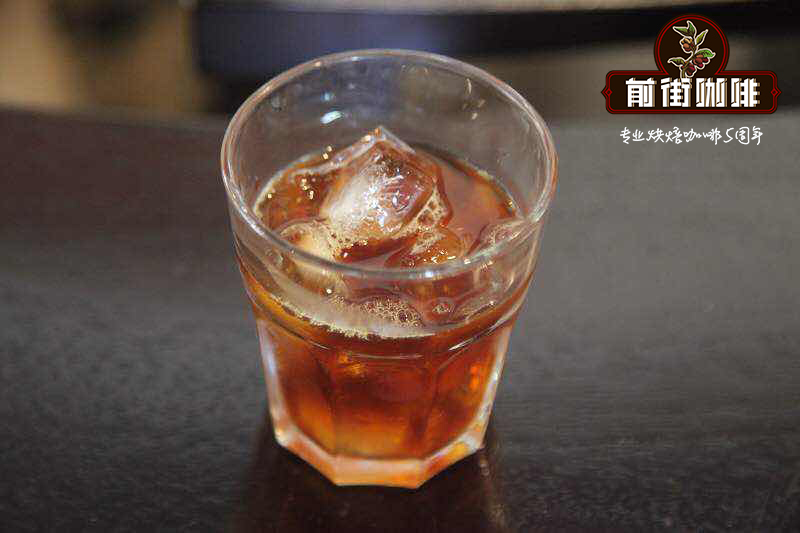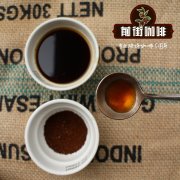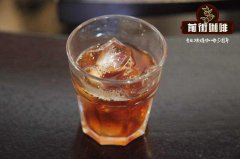The origin and spread of the name of bourbon coffee. What are the varieties of bourbon?

Professional coffee knowledge exchange more coffee bean information please follow the coffee workshop (Wechat official account cafe_style)
The origin and spread of the name bourbon coffee:
The name bourbon comes from the island where it is grown. It was named bourbon in 1715 after France transplanted round beans from Yemeni mocha to the island of Bourbon on the east coast of Africa (renamed Reunion after the French Revolution). Then in 1717, the French shipped another batch of round bourbon seedlings from Yemen, which became the forerunner of bourbon coffee.
In 1732, the British East India Company took Bourbon coffee seedlings from Yemen and planted them on St. Helena Island. Between 1860 and 1870, Bourbon varieties were first introduced to Brazil in Central and South America, gradually replacing Tibica, and then Bourbon rapidly expanded northward to other parts of South and Central America.
After 1900, French missionaries introduced bourbon coffee from Bourbon to Kenya, Tanzania, Rwanda and other places. Nowadays, bourbon coffee has become a main force of high-quality coffee in the world.
Tree characteristics of bourbon coffee:
Slightly different from the red-top coffee iron pickup, bourbon coffee has a green roof, broad leaf edges and wavy leaves, while the yield is 30% higher than Tibica coffee, with round and short beans, thick sour berries, obvious cream and flavor, strong sour flavor, and obvious sour flavor. but the same problem is poor disease resistance.
The leaves of bourbon coffee have a green roof.
Bourbon coffee variety:
Compared with Tippica coffee, bourbon coffee has more and more abundant varieties, such as Kaddura, Pacas, pointed bourbon and so on. Next, the editor will introduce some of the most classic ones.
Red bourbon: red bourbon is a coffee tree introduced to Brazil through Campinas in the south around 1860. it is also a typical coffee tree. It is still widely cultivated in El Salvador, Guatemala, Costa Rica, Peru and other countries in Central and South America.
Coffee growing area in Brazil
Kaddura: Kaddura is a bourbon variety discovered in Brazil in 1935. It is popular with farmers because it can withstand direct sunlight and does not need to plant shade trees. At the same time, Kaddura has a high yield and a high demand for soil fertility, but it is also accepted by boutique coffee lovers because of its good flavor cup performance.
Bourbon pointed body: bourbon pointed body is a variety of bourbon species. Found in French Bourbon Island in 1810, the coffee tree is dwarf type, coffee beans are thin, like dysplastic defective beans, and the yield is the lowest among the Bourbon dwarf type. weak and sickly, but its flavor is very special, with a very special citrus flavor and litchi flavor, and the caffeine content is half that of small seeds, which is a natural decaf coffee.
The long, thin, pointed body of the coffee bourbon
In SL28:1930~1940, botanists at Scott Laboratories in Kenya cultivated and screened new bourbon varieties with strong disease resistance, high productivity and drought tolerance, which adapted to Kenya's high phosphate soil and sun-exposed cultivation. At the same time, berries were rich in flavor and lively acid, so they were widely loved by coffee lovers.
Pacas: a natural mutant of bourbon, it was discovered by the Pacas family in El Salvador in 1949. The pericarp of Pacas variety is red, and its lower bushes are favorable for artificial harvest. The flavor is generally considered to be similar to bourbon and belongs to a more agreeable type.
Vera. Sarge (Villa Sarchi)
Found in the town of Costa Rica, and hence its name, it is another natural mutant of bourbon, showing "dwarf-like" low bushes like Pacas. At present, it has been cultivated into a coffee variety with very high yield and excellent flavor performance. Red peel.
Mondonovo (Mundo Novo)
A natural hybrid of Tibica and bourbon. Found in Brazil in the 1940s, it is named after local place names. Mondonovo is widely cultivated for its relatively high fruit yield, strong physique, and good disease resistance; in addition, it can adapt to the altitude of about 1000 to 1200 meters common in Brazil.
Important Notice :
前街咖啡 FrontStreet Coffee has moved to new addredd:
FrontStreet Coffee Address: 315,Donghua East Road,GuangZhou
Tel:020 38364473
- Prev

Costa del boutique coffee Galaclajas Manor Kaddura Kaduai Diamond Honey treatment
For more information on coffee beans, please follow the coffee workshop (Wechat official account cafe_style) Costa Rican Coffee is produced in the Republic of Costa Rica (The Republic of Costa Rica) in the south of Central America. Its quality is similar to Colombian coffee and is suitable for blending mixed coffee. In 1848, the Republic of Costa Rica was established. In 2007, with
- Next

African washing treatment of Kenyan coffee beans flavor and taste characteristics of Kenyan K72 treatment
Professional coffee knowledge exchange more coffee bean information Please follow the coffee workshop (Wechat official account cafe_style) A few days ago, street coffee just entered the washing of three different cooperatives in Kenya. When it comes to Kenyan coffee, what is unforgettable is its strong sour taste, distinct fruit flavor and rich flavor.
Related
- Detailed explanation of Jadeite planting Land in Panamanian Jadeite Manor introduction to the grading system of Jadeite competitive bidding, Red bid, Green bid and Rose Summer
- Story of Coffee planting in Brenka region of Costa Rica Stonehenge Manor anaerobic heavy honey treatment of flavor mouth
- What's on the barrel of Blue Mountain Coffee beans?
- Can American coffee also pull flowers? How to use hot American style to pull out a good-looking pattern?
- Can you make a cold extract with coffee beans? What is the right proportion for cold-extracted coffee formula?
- Indonesian PWN Gold Mandrine Coffee Origin Features Flavor How to Chong? Mandolin coffee is American.
- A brief introduction to the flavor characteristics of Brazilian yellow bourbon coffee beans
- What is the effect of different water quality on the flavor of cold-extracted coffee? What kind of water is best for brewing coffee?
- Why do you think of Rose Summer whenever you mention Panamanian coffee?
- Introduction to the characteristics of authentic blue mountain coffee bean producing areas? What is the CIB Coffee Authority in Jamaica?

